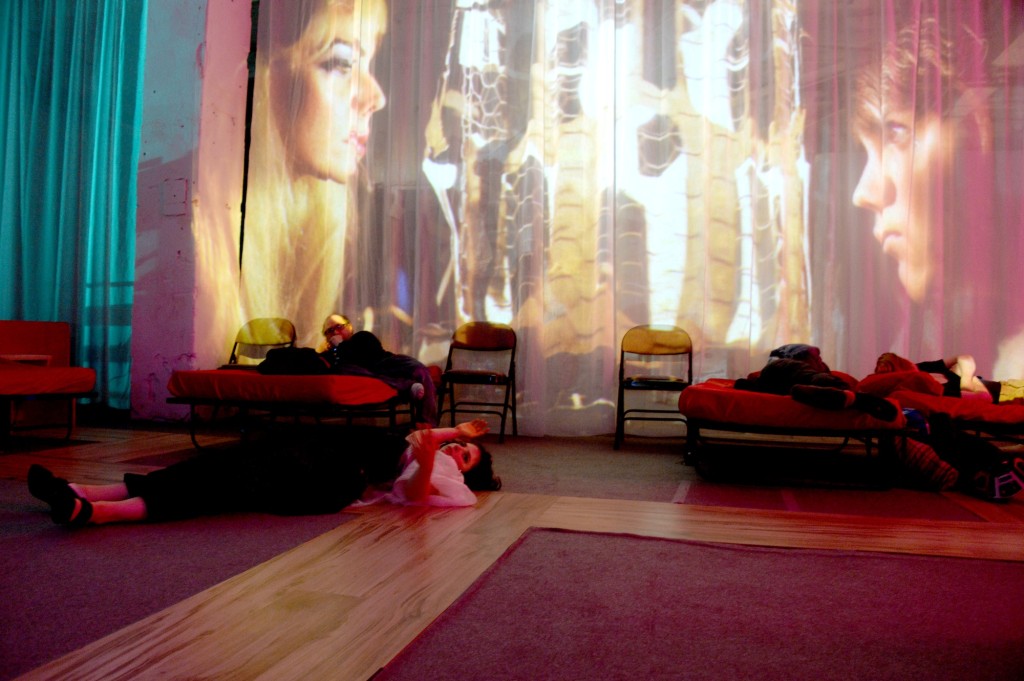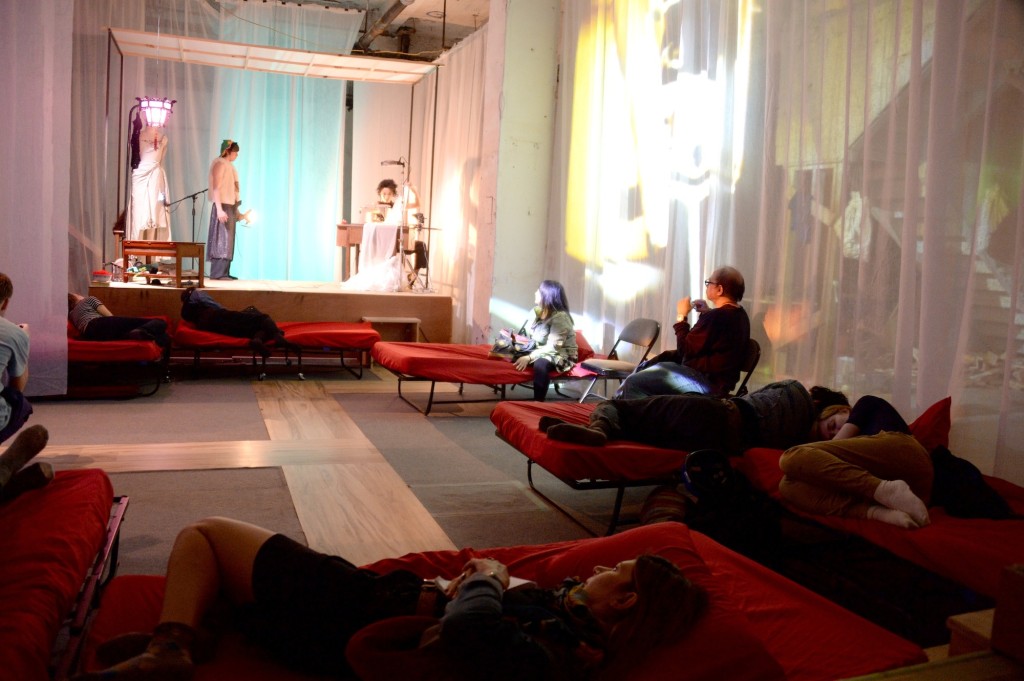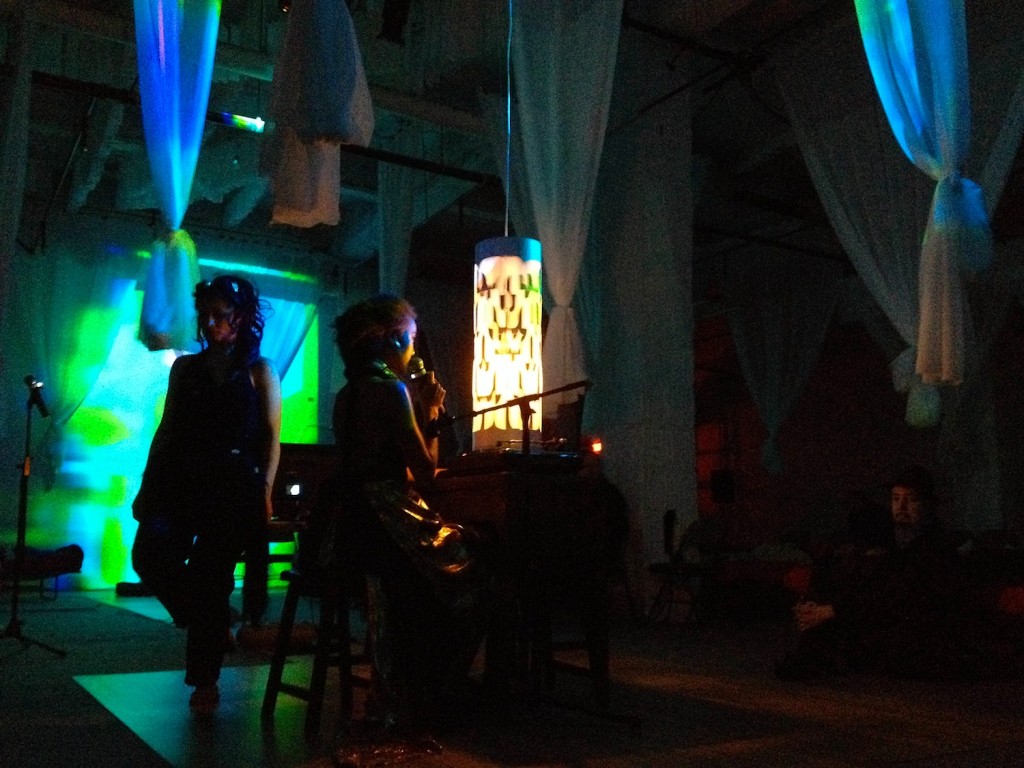
Dream of the Red Chamber, Interior performance view, New York, Photograph by Clint Spaulding for @TSqArtsNY, 2014
The director of Dream of the Red Chamber, Jim Findlay, has a thing for sleep. The last time I encountered him was at After the Show, a symposium on transgressive theater. The event approached the nuanced lines between conceptual theatrical works and the art world’s take on performance. While many of the presentations were in the format of interviews or proposals for works, Findlay’s was more of a performance and consisted of him unfurling a bed roll, slipping on a eye-mask, popping in some ear buds, and falling asleep on the stage. Findlay snoozed through the rest of the evening while the rest of us presented our work, at times giving humorous jolts of snoring. This act of getting some shut-eye seemed irreverent in comparison to his latest approach, which was poetic. Rather than sending an audience to sleep due to boredom, Dream of the Red Chamber (based on the 18th century Chinese text of the same name, by Cao Xueqin) was designed to give the audience permission to drift between sleeping and waking, to experience the piece as the stirrings of a dream. The beds that filled the performance space were provocative not just because they merged what is commonly two distinct spaces (a stage and seats), but because they forced the audience to surrender. To be invited to recline and enter into one’s own, ever-mysterious subconscious, was a bold endeavor and a radical reconsideration of what it means to be an audience.
In keeping with the history of the Brill Building, the piece played appropriate attention to sound, using wandering electronic music to lull sleepers in and out of waking. From what I gathered in the interruptions in my dozing, the work was structured with crescendos of action from the performers, who would speak (or cry) into microphones staged in front of cameras that were connected to projectors, which would send the image of their faces onto the curtains. After ten minutes or so, the performers would dissipate and quiet, save for some balletic wandering through the maze of curtains. In the interim between these scenes, pulsing music played while colorful projections rippled the curtains. I admit, I didn’t dream, and so the whole thing felt like diving underwater, sound muffled and sight blurred by the brackish ocean, occasionally buoying to the surface for a burst of things more discernible. The peaks in action, felt made to wake me, to carry me out of my dream and into the shadowy world of the performance. I say shadowy, because the narrative structure was loose, more like a suggestion than a plot one was meant to follow.
It was a generous offering, to coax the audience to such a new position for experiencing work. Unfortunately, I didn’t feel the rest of the piece gave the same hospitality and respect for those present. Curtains were held up with binder clips, cans of beer cracked open mid-performance, and two crew members had a disruptive conversation near my head in the early morning hours. Aside from this disappointing slippage that felt a bit undergraduate, the piece was conceptually rich. In the quiet coming of a new day, as I untangled myself from the red sheets, and exited into a remarkably vacant Times Square, I was left with a striking evaluation of the assumptions and quiet complexities of what it means to be an audience member.

Dream of the Red Chamber, Interior performance view, New York, Photograph by Clint Spaulding for @TSqArtsNY, 2014
Dream of the Red Chamber was held May 9th-17th. 2014 at the Brill Building in Times Square and presented by Times Square Alliance.

